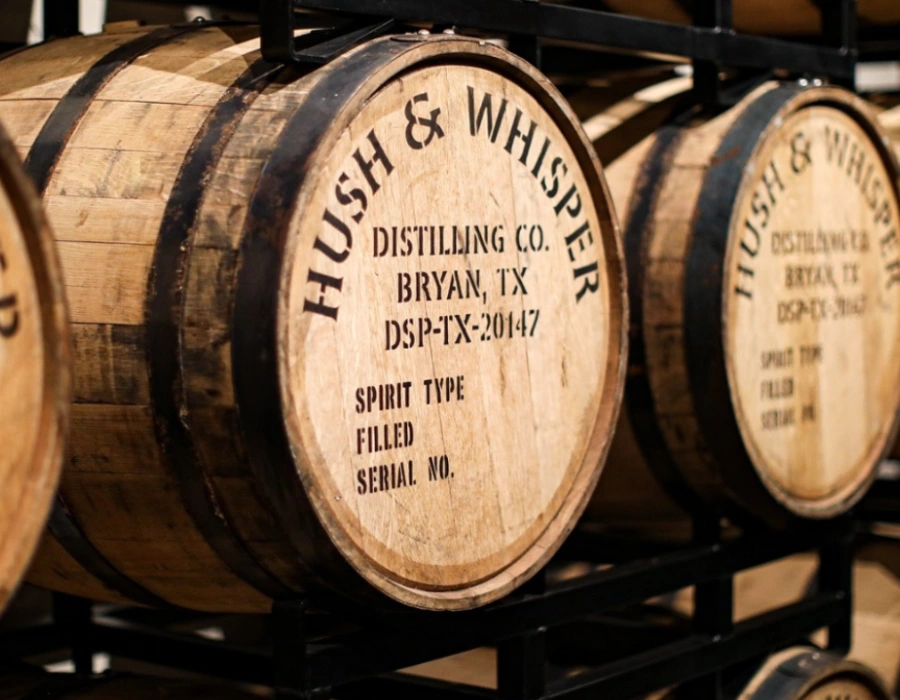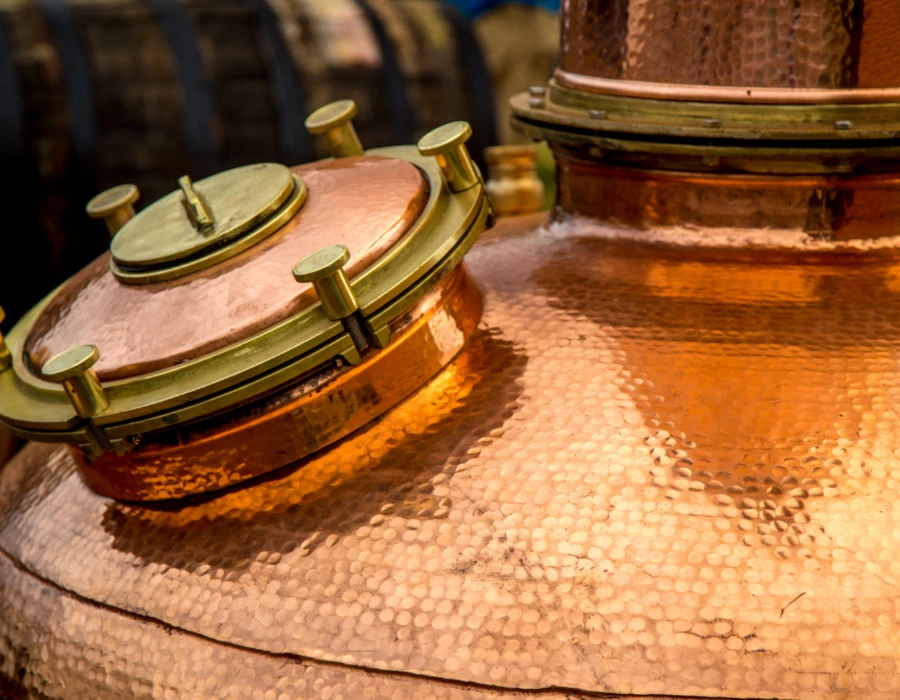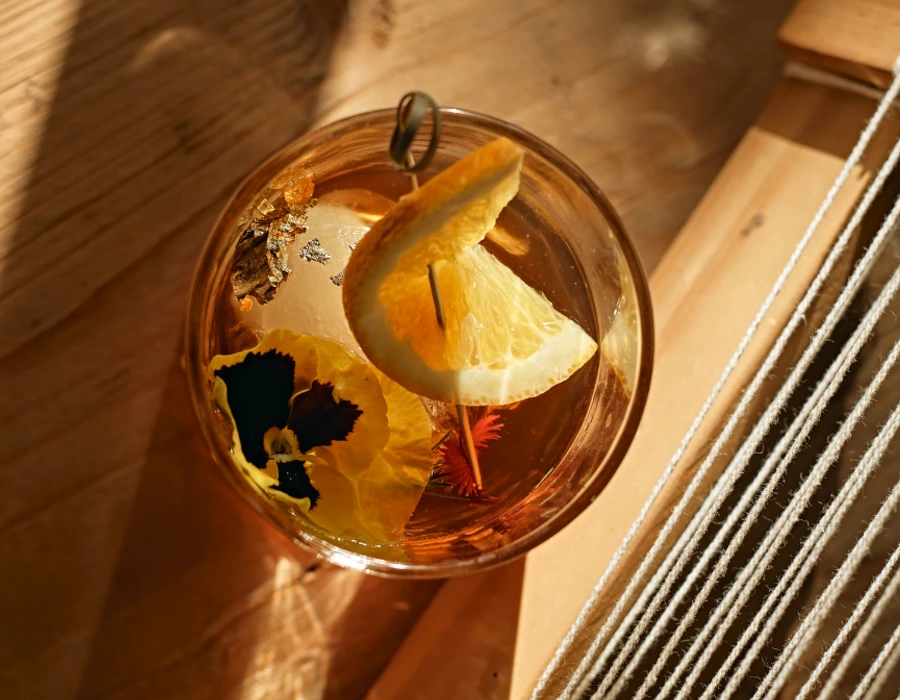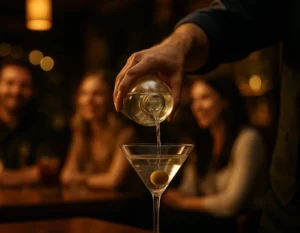Small-batch whiskey isn’t just a drink—it’s a revolt against the ordinary.
At Hush and Whisper, we live and breathe the small-batch process, so trust us when we say: this is where the real flavor lives. In a world of mass-market sameness, small-batch distillers are chasing bold grain bills, playing with fire (and fermentation), and making whiskey that actually means something. Whether you’re already deep in the craft scene or just starting to wonder what makes one bottle more “authentic” than another, this is your field guide to small-batch whiskey—what it is, why it matters, and how to spot the good whiskey.
Small-Batch Whiskey Isn’t Just a Buzzword
At Hush and Whisper Distillery, small-batch isn’t a marketing gimmick—it’s the only way we make whiskey. Every barrel tells a story. Every sip is packed with bold flavors, not filler. Small-batch means control, character, and craft—distilled in limited quantities by people who obsess over every detail.
While the phrase “small-batch” might be getting tossed around the whiskey world like garnish in a cocktail, true small-batch production stays rooted in tradition, care, and creativity. It’s where modern drinkers meet traditional methods. And the result? Whiskey that kicks your taste buds awake and sticks with you long after the glass is empty.
What Is Small-Batch Whiskey, Really?
Small-batch whiskey can be hard to define—but you know it when you taste it. Let’s break down what actually goes into that label and why it matters.
A Quick Definition (and Why It’s Fuzzy)
There’s no single rule defining how small a “small batch” must be. Some distillers say under 100 barrels per batch, others say fewer than 50. But the spirit of the thing is consistency: small-batch whiskey is handcrafted in limited quantities, usually in-house, and often by independent distilleries—not mega-factories.
How It Differs From Mass Production
- More flavor variation between batches
- More control over the mash bill, fermentation, and aging
- More creative risks
- More bragging rights for you, honestly
It’s whiskey with a point of view—and usually a pretty strong one.
The Process: How Small-Batch Whiskey Is Made
Here’s where the magic happens. Small-batch whiskey follows the same essential steps as larger-scale spirits—but with way more intention (and way fewer corners cut).
Step 1: Selecting the Grain
Every good whiskey starts with grain. At Hush and Whisper, we use a bold mix: 70% corn, 16% wheat, and 14% malted barley—all sourced from a fifth-generation farm right here in Texas. That blend (a.k.a. mash bill) gives our Hush and Whisper whiskey its signature backbone: sweet, earthy, and just a little wild.
Step 2: Mashing and Fermentation
Once the grains are milled, they’re mixed with water and cooked to break down the starches. Yeast is added to kick off fermentation, converting sugars to alcohol over several days. The longer, slower fermentation typical of small-batch whiskey builds complexity and unique flavors that big brands just don’t bother with.
Step 3: Distillation
Fermented mash is then distilled, usually in a pot or hybrid still. These stills might be slower than the column stills used in large factories, but they give the distiller more control. The result is a cleaner cut with more character and better carryover of grain-derived aromas, spice, and sweet notes.
Step 4: Aging in Charred Oak Barrels
Now comes the waiting game. Whiskey is transferred to charred oak barrels, where it soaks up flavor from the wood. Over time, heat and humidity pull the liquid deep into the staves and back out again, adding vanilla, caramel, smoke, and a hint of honey or dark chocolate, depending on the conditions and grain blend.
Step 5: Bottling by Hand
After months—or years—of aging, small-batch whiskey is bottled with care. Sometimes it’s filtered, sometimes it’s left uncut and unfiltered for maximum punch. Either way, you’re getting something special, often a limited edition release marked by batch number and barrel source.
Why the Mash Bill Matters
Grain makes the base, and the base makes the whiskey. Let’s talk about how the mash bill affects the flavors in your glass.
A whiskey’s mash bill isn’t just a recipe—it’s a manifesto.
Whether it leans heavily on corn like a classic bourbon, or brings in bold rye or soft wheat for a different edge, the grain ratio determines flavor, body, and finish. You’ll taste it in the spicy kick, the smooth finish, the rich backbone that lingers on your palate.
The Bold Rise of Craft Whiskey
Small-batch production is just one part of a larger craft movement. This is where the innovation lives—and where tradition gets a little rebellious.
What Makes a Whiskey “Craft”?
- Independent ownership
- Limited, hands-on production
- Transparency in ingredients and process
- A commitment to bold, distinctive flavors
Craft whiskey lives in the tension between tradition and experimentation. It’s where old-school techniques meet new-school creativity. And it’s exactly where Hush and Whisper thrives.
American Whiskeys Leading the Way
While Kentucky gets plenty of spotlight for its legendary bourbon, craft distillers across Texas, Colorado, Oregon, and beyond are redefining what American whiskey can be. We’re not trying to copy legacy brands—we’re trying to create something new.
Let’s Talk Flavor
No two small-batch bottles taste the same—and that’s the point. Here’s what to look for in the glass.
What You Might Taste in a Small-Batch Pour
Because small-batch whiskey isn’t built to be uniform, you get a much broader flavor experience. Depending on the grain, aging time, and barrels used, you might find:
- Sweet notes of vanilla, caramel, or honey
- A spicy kick from rye or oak
- Bold flavors like dried fruit, smoke, or even dark chocolate
- Smooth, buttery textures from wheat
- Sharp grain bite mellowed by time and char
Each pour speaks. Each sip surprises.
What Makes Straight Bourbon… Straight?
Some terms get tossed around a lot—so here’s what “straight bourbon” actually means, and why small-batch versions are worth chasing.
The Rules of Straight Bourbon
Straight bourbon must be aged at least two years in new charred oak barrels, made from at least 51% corn, and contain no additives. It’s a cornerstone of the American whiskey canon—but when it’s done small-batch style, it hits different. Expect stronger aromas, bolder spice, and often a rawer edge.
Rye Whiskey: Spice with a Punch
If you want whiskey that bites back, rye is your bottle. Here’s how it plays in the craft space.
A Bold Flavor Profile
Many rye whiskeys pack a wallop—bright, spicy, and dry, with notes of black pepper, clove, and citrus peel. In small-batch form, rye gets even more interesting, often layered with herbal or citrusy surprises.
Single Malt, American Style
Let’s get one thing straight—single malt isn’t just for Scotch drinkers anymore.
How American Distillers Are Shaping the Category
Single malt made in the U.S. often uses 100% malted barley, aged in new or used barrels, and sometimes finished in creative casks (wine, sherry, even stout). It’s a new take on an old favorite—with plenty of malty depth, soft fruit, and a round, lingering finish.
Why Small Batches Mean Big Flavor
Size doesn’t just matter—it changes everything. Here’s how limiting batch size amplifies complexity.
Blending With Intention
With fewer barrels in each batch, distillers can blend more deliberately. Some barrels offer sweet vanilla, others lean toward smoke or oak. Together, they build a layered, expressive whiskey that’s far more interesting than a mass-market blend.
What “Limited Edition” Actually Means
We’re not talking about artificially scarce drops. True limited editions mean something more.
Small Runs, Big Stories
When a bottle is labeled limited edition, it usually comes from one specific batch or barrel selection that won’t be repeated. These are often distilled with experimental grains, aged in unusual barrels, or bottled at higher proof. Think of it as the flip side of “just a subscription”—you’re not just buying a product, you’re buying a moment in a distiller’s creative process.
The Collector’s Appeal
Some people collect sneakers. Others collect spirits. Here’s why whiskey fans chase down small-batch bottles.
The Allure of the Rare
Owning a rare small-batch bottle comes with serious bragging rights. Whether it’s a single barrel release or a once-a-year cask strength drop, these whiskeys get snapped up fast—and talked about even faster.
Tasting Tips: Make the Most of Every Sip
You don’t need to be a sommelier to taste whiskey like a pro. A little awareness goes a long way.
Tasting Basics
- Let it breathe in the glass
- Smell the nose before the first sip
- Sip slow—notice how it hits your palate
- Add a drop of water to unlock softer fruit or honey notes
How to Spot the Real Deal
Lots of brands say “craft.” Fewer actually do the work. Here’s how to tell the difference.
What to Look For
- Real distillery tours and transparent sourcing
- Batch numbers, barrel info, production details
- A clear origin story—ideally with people behind the bottle
If they won’t tell you where or how it’s produced, that’s your sign.
Hush and Whisper Distillery: Our Small-Batch Story
We didn’t build this distillery to be ordinary. Here’s how we do small-batch our way.
Texas Grown, Handcrafted Start to Finish
At Hush and Whisper Distillery, every drop is made with intention—from sourcing local grain, to milling and fermenting on-site, to aging in carefully selected barrels. No outsourcing. No shortcuts. Just bold, expressive whiskey from Texas—made to stir up the status quo.
Time to Sip Something Worth Talking About
Mass-market bottles are fine—if fine is what you’re after. But if you’re chasing flavor, story, and spirit, small-batch is where it’s at. At Hush and Whisper Distillery, we don’t play it safe. We make whiskey that stands up, speaks loud, and leaves a lasting impression.
Come by the distillery. Taste what happens when every step matters. And take home a bottle that doesn’t just sit on the shelf. It starts a conversation.







